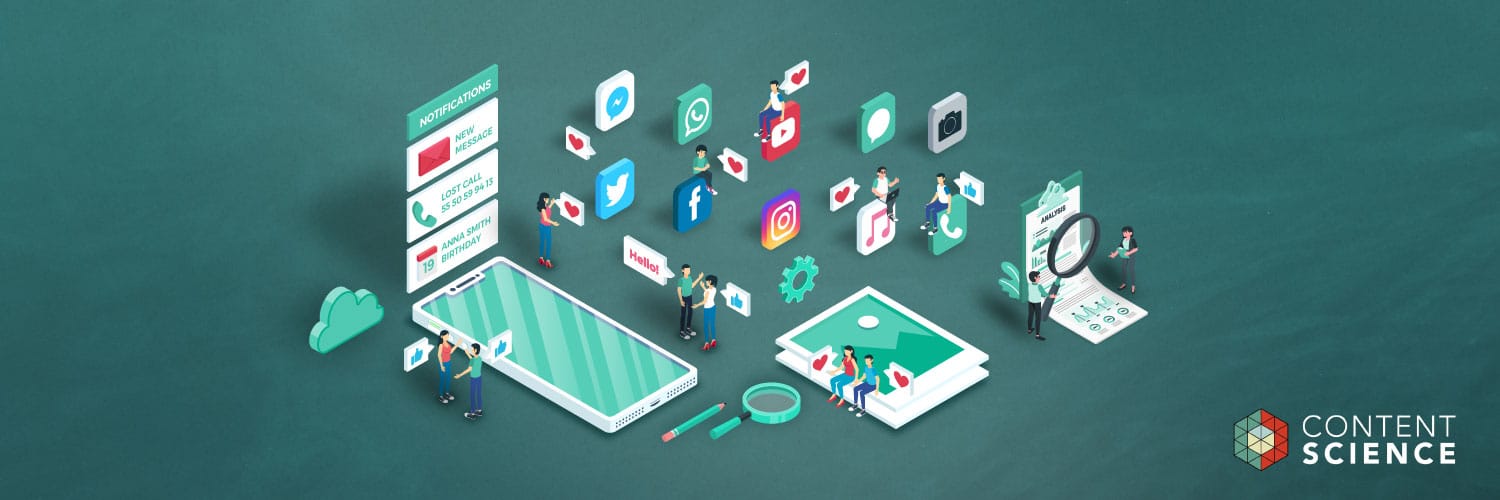
If users can’t find your content, does it even exist? The answer is that it might as well not. So, optimizing for content discovery is essential.
In fact, we have found that it is so important that your organization makes content easy for users to discover or find, that Content Science includes Content Discovery as one of the six dimensions of content effectiveness that we measure with our ContentWRX software.
ContentWRX evaluates content effectiveness across these six dimensions: content discovery / findability, accuracy, usefulness, relevance, polish, and influence. Our research has found that content was 53% less effective for people who experienced difficulty finding it. And, when people perceived content as hard to find, they also seriously doubted its accuracy, relevance, and usefulness to their goal. If your customers had trouble finding your content but eventually did, they are:
- Less than half as likely to view that content as accurate.
- Nearly one-third as likely to view that content as relevant.
- Less than half as likely to perceive that content as helpful to accomplishing their goal.
This step-by-step starter guide walks through key ways to get your content discovery initiative going.
Step 1: Get Rid of Outdated and Poorly Performing Content
Don’t let old and underperforming content hinder users from finding the right content.
Here are suggested ways to get started with content discovery cleanup:
- Conduct a content inventory, which includes assembling a list and description of the content assets—pages, images, documents, videos, components, and more—that compose your website or digital experiences.
- Audit your content, with the help of a spidering tool, examining content performance and quality. (You can use our Content Quality Checklist)
- Archive or delete content you no longer need.
- Ensure the content you keep meets your customer or user needs and business goals.
Step 2: Apply Solid Optimization Best Practices for Content Discovery
Focus on tried-and-true practices that will help search engines, such as Google and the search engines on your website or mobile app, retrieve the right content.
Here are suggested ways to get started with content discovery optimization:
- Focus on topics your customers care about.
- When possible, don’t focus on exactly the same topics as your competitors. Tools such as Google AdWords and Moz can help you assess your options.
- Use the topic and topic phrases in page elements including names, asset names, metadata descriptions, and text content.
- Use a tool such as Moz or a search engine optimization plug-in to help automate and check search engine optimization (Drupal and WordPress have several, for example).
- For web pages, specify an image that will display when the page is shared on social media. Adjusting your web page administration template or adding a plug-in can enable this feature if you do not already have it.
Step 3: Embrace Content Personalization to Enhance Content Discovery
Your users shouldn’t have to do the work of finding your content. Start thinking about how your company can take on the burden of connecting your customers with the right content.
Here are suggested ways to get started with content personalization for better content discovery:
- Proactively offer your customers suggested content or information immediately when they visit your site.
- Show your customers or users content that other people with similar interests, needs, or other similarities found useful.
- Give your customers suggestions for more content similar to the content they just consumed.
- Remind or alert customers of important decisions, tasks, and more.
- Customize offers or messages based on your customers’ interests or status.
- Plan microcopy and contextual help to guide customers in the moment rather than make them look up instructions.
Step 4: Code Content to Enable Smart Delivery and Artificial Intelligence
To personalize content delivery as well as deliver content efficiently across channels, touchpoints, and devices, your content needs coding. Your content management system or content marketing platform or artificial intelligence solution (such as a chat bot) doesn’t magically make that happen.
Here are suggested ways to get started with content coding to aid content discovery:
- Model your content types and components, defining a complete list of the types of content you have.
- Develop logic, taxonomy, and metadata that supports your content model.
- Engineer rules and logic about your content voice, style, and more to drive natural language generation or automated optimization efforts.
Next Steps
Follow these steps and suggestions to begin to put together a plan for improving content discovery. Once you have identified what your organization needs to do to get started with content discovery, an essential next step is to find out (using a tool such as ContentWRX) how your content is currently performing in terms of discoverability/findability. Understanding where you are will help you determine how fast and how far you have to go to make sure users can find your content. You can also learn more about content discovery in The Content Advantage or by partnering with Content Science.
Events, Resources, + More
The Ultimate Guide to End-to-End Content
Discover why + how an end-to-end approach is critical in the age of AI with this comprehensive white paper.
The Content Advantage Book
The much-anticipated third edition of the highly rated book by Colleen Jones is available at book retailers worldwide. Learn more!
20 Signs of a Content Problem in a High-Stakes Initiative
Use this white paper to diagnose the problem so you can achieve the right solution faster.
Upskill with Content Science Academy
Training for modern content roles through on-demand certifications + courses or live workshops.






Comments
We invite you to share your perspective in a constructive way. To comment, please sign in or register. Our moderating team will review all comments and may edit them for clarity. Our team also may delete comments that are off-topic or disrespectful. All postings become the property of
Content Science Review.